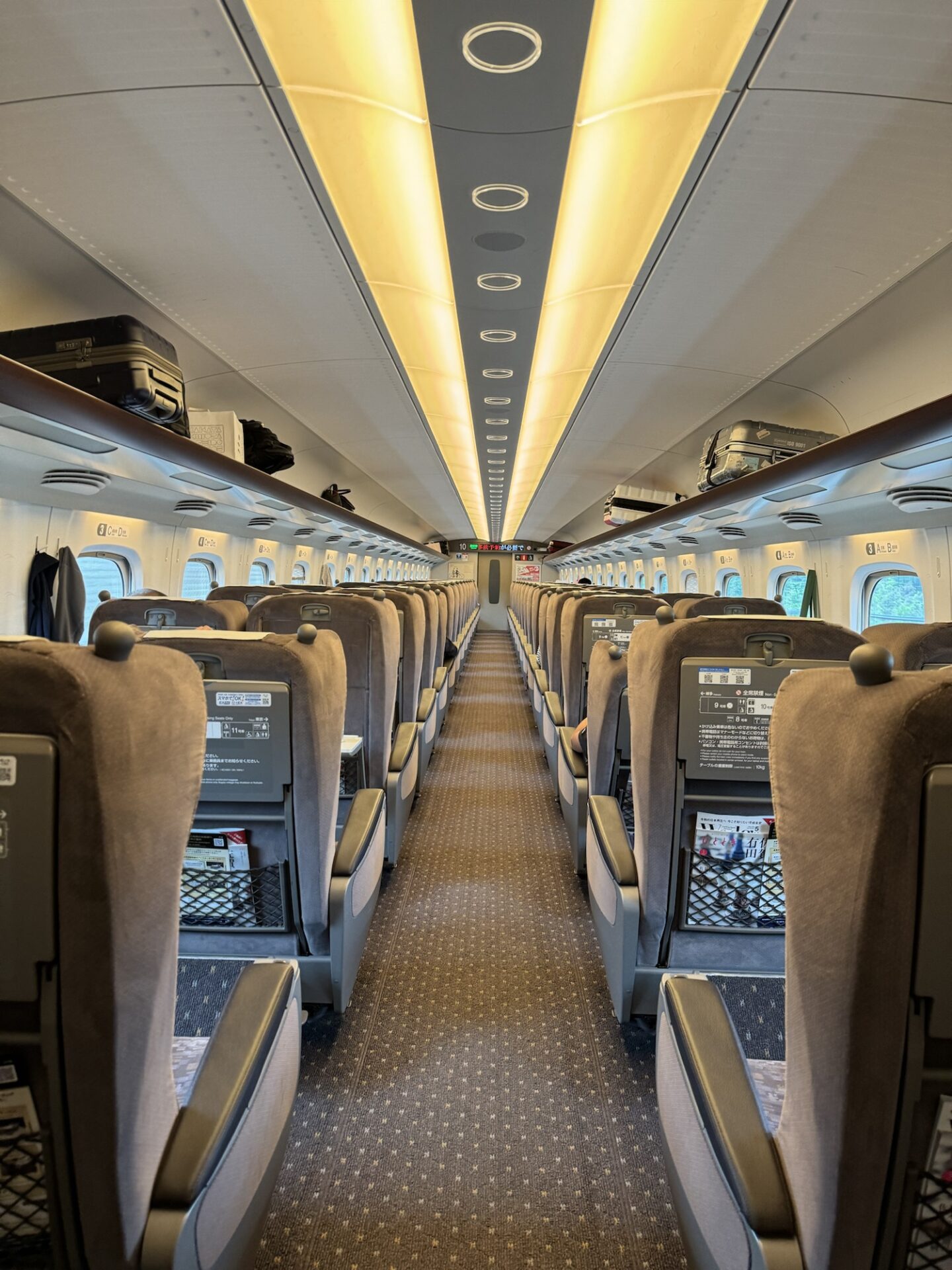The Shinkansen, Japan’s iconic high-speed rail network, is renowned for its punctuality, comfort, and efficiency. Whether you’re a first-time visitor to Japan or a seasoned traveler, experiencing a ride on the Shinkansen is a must-do. In this guide, I’ll cover everything you need to know to make the most of your Shinkansen journey.
I’ve had the pleasure of riding the Shinkansen numerous times, and I feel it’s about time I share my experience with others. Let’s get started, shall we?

Understanding the Shinkansen Network
- Japan’s Shinkansen network connects major cities across the country, including Tokyo, Osaka, Kyoto, Hiroshima, Fukuoka, and more.
- Different types of Shinkansen trains operate on various routes, such as the Nozomi, Hikari, and Kodama.
Purchasing Tickets
- Tickets can be bought online, at ticket counters in train stations, or through automated machines.
- If you are planning to take multiple trips on the Shinkansen within a short period, it might be worth considering purchasing a Japan Rail Pass. However, I have never done this since I am now a resident here. Nevertheless, I have read that some people find it cost-effective based on their destinations.
I strongly advise purchasing tickets at the ticket counters for a smoother and stress-free experience. The staff is capable of communicating in English, though not always perfectly, so language barriers shouldn’t be a major concern as they are familiar with essential terms. Moreover, buying tickets from the staff is generally more straightforward compared to using the machines, which can still be confusing even with English language options. Trust me, opting for tickets at the counter is the preferred choice.
Boarding the Train
- It is advisable to arrive at the station well in advance of your departure time to ensure that you have enough time to purchase tickets, check platform numbers, and attend to any other details.
- When looking for your train, check the announcement screens for the correct platform number. Make sure to check your ticket for the Shinkansen line name as each train has a different platform number. See the photo below.
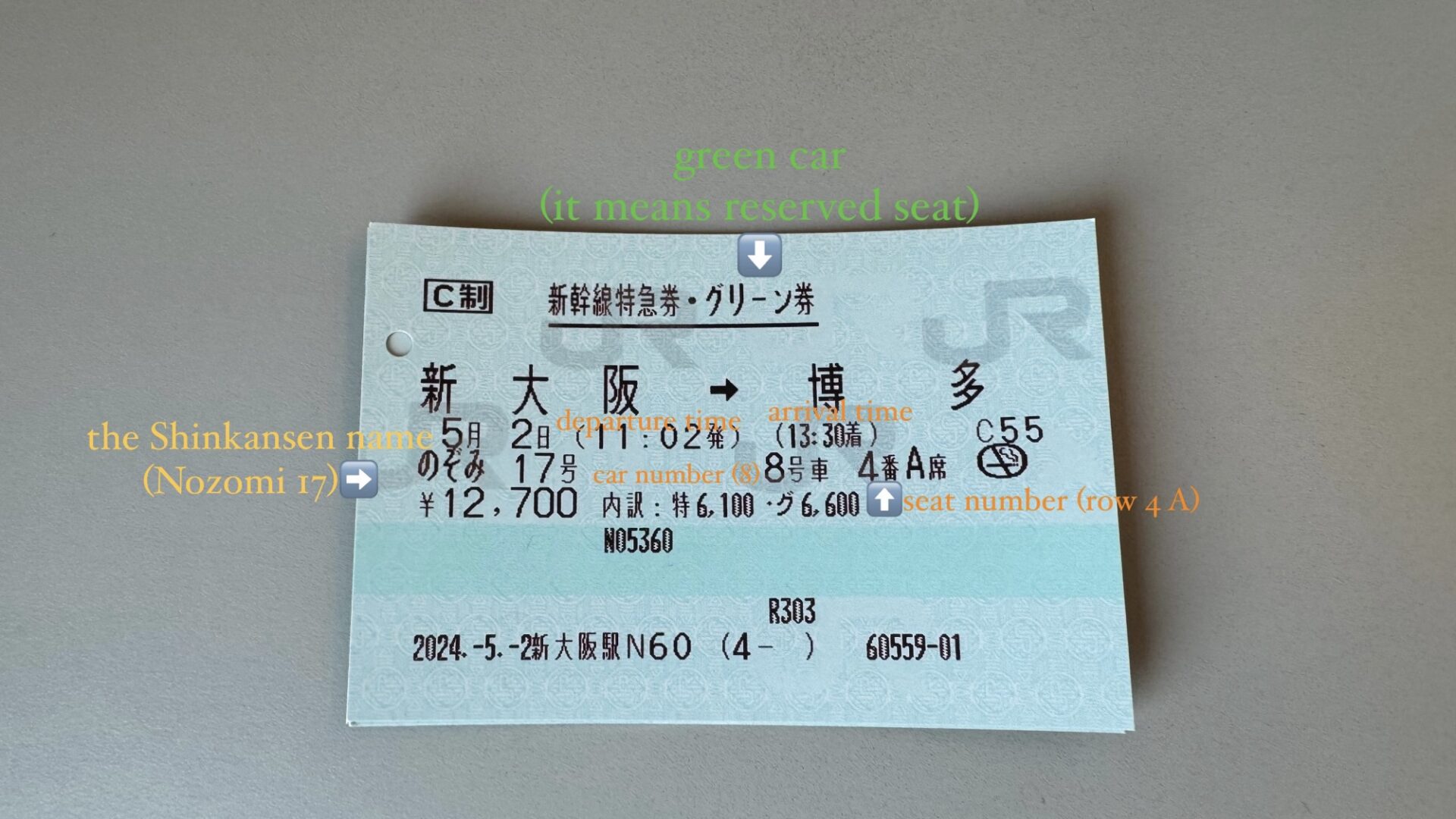
Osaka to Fukuoka.
Green Car/ Reserved Seats
When traveling on a Shinkansen train, you might come across the term ‘green car’. This refers to the first-class car, which provides more spacious and comfortable seating. In the green car, there are only four seats in each row (two on each side), making it a more exclusive and less crowded option. To locate the green car, simply look for the four-leaf clover logo outside the train. You can also identify the green car by the brown color of its seats, while the seats in the normal cars are blue, with five seats in each row (two on one side and three on the other). Keep in mind that seats in the green car are reserved, so plan ahead if you want to upgrade your travel experience.
To locate non-reserved seats on the Shinkansen, simply check the digital screens outside the train, which display ‘Non-Reserved Seats’.
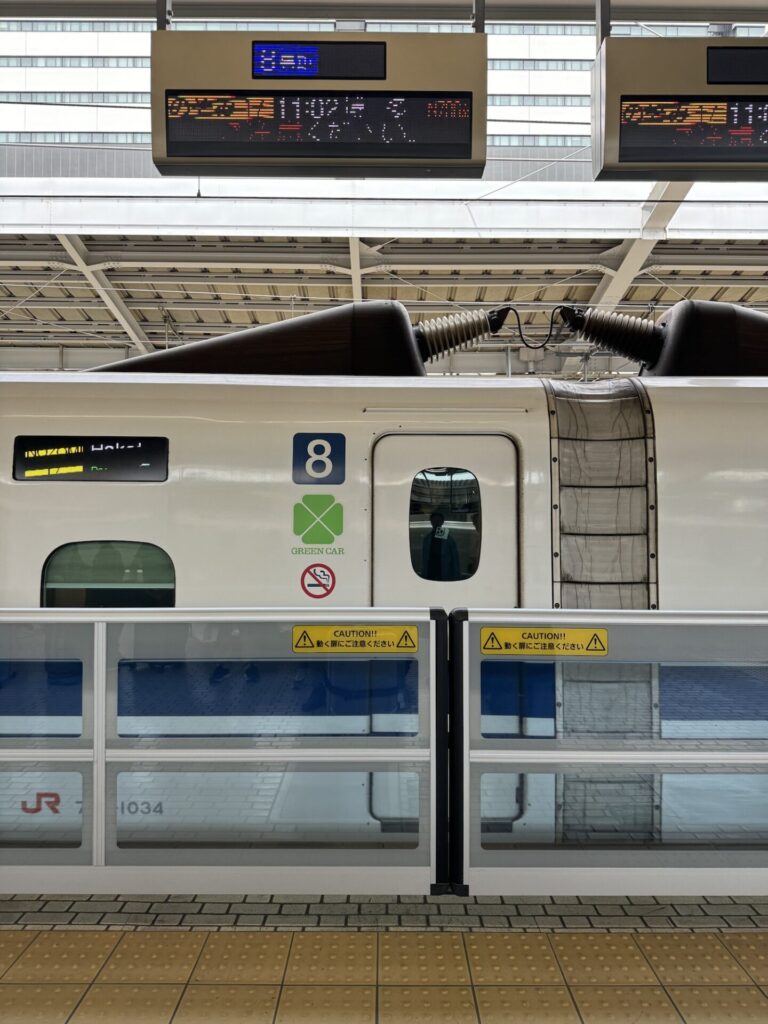
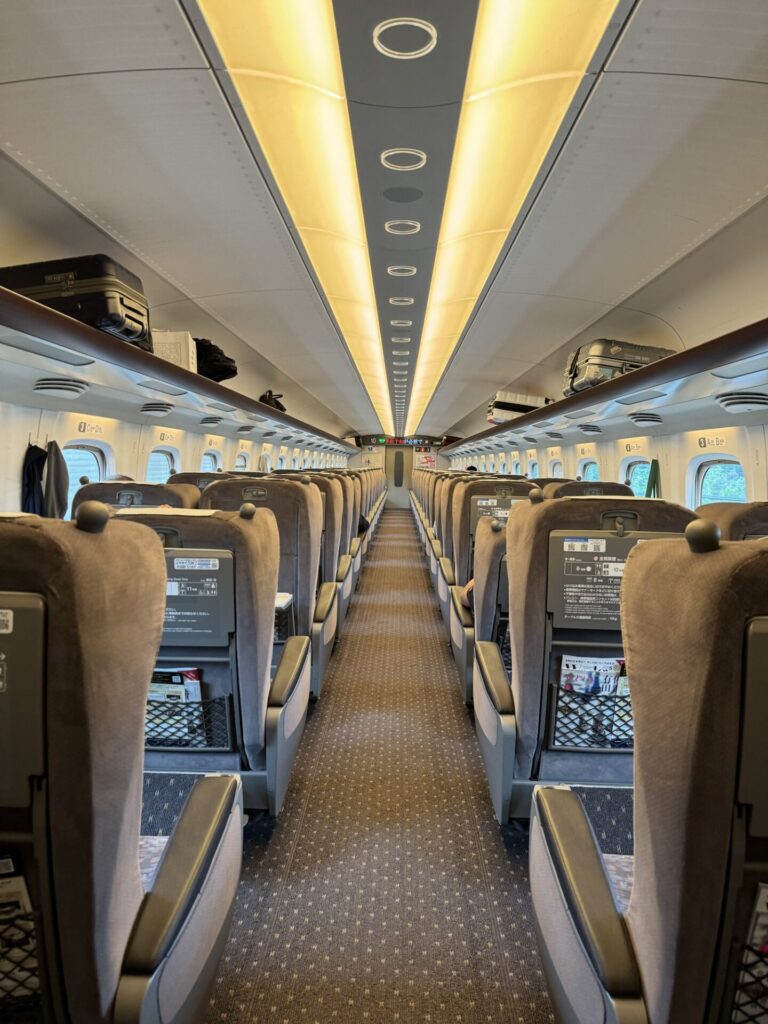
Non-reserved Seats
Non-reserved seating on the Shinkansen refers to seats available for passengers without prior booking. When purchasing a ticket for a Shinkansen, you have the option of choosing between reserved and non-reserved seating. Non-reserved seating is allocated on a first-come, first-served basis in designated cars, usually numbering from 1 to 5 on most trains. Without a specific seat assignment, passengers in these cars may need to stand if the train is full, as seating availability is not guaranteed.
Onboard Amenities
- Restrooms are available on the Shinkansen, and they are child-friendly and equipped with Braille.
- Shinkansen trains offer comfortable seating with ample legroom and luggage space.
- Power outlets.
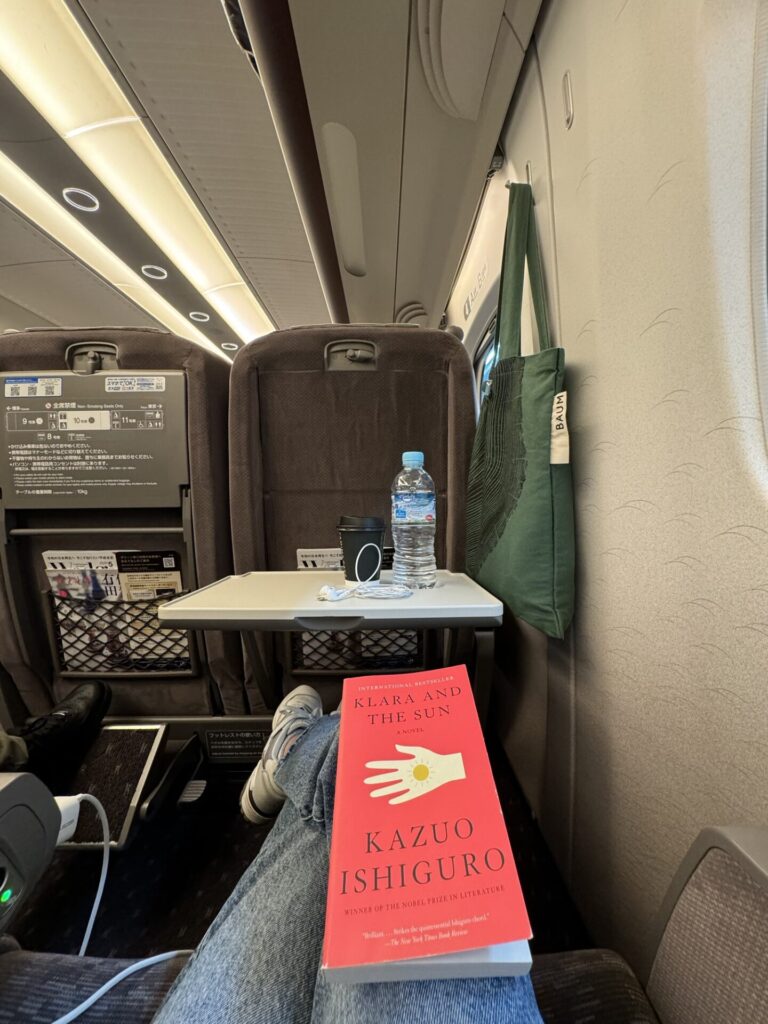
Oversized Luggage
If your luggage is a bit on the larger side, falling between 160 and 250 cm when you add up all sides (A+B+C), you’ll need to make a reservation as this cannot be accommodated in the overhead bin. This size is similar to what might prompt an oversized baggage fee on international flights, although it can vary depending on the airline. To make sure your oversized luggage travels comfortably, just book a seat with access to the right area or compartment. Tickets for oversized baggage areas are not subject to additional costs when reserving seats. Forgetting to reserve might mean a small baggage fee of 1,000 yen, including tax, so it’s worth planning ahead!
Stations are equipped with tools that allow you to measure your luggage accurately.
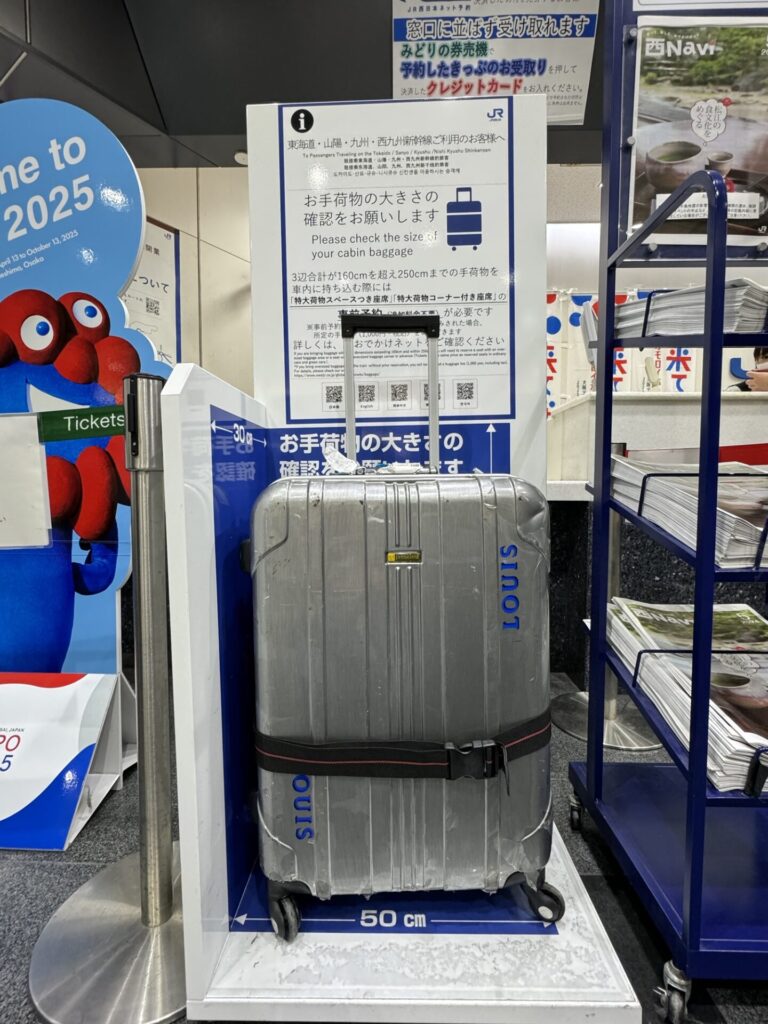

Etiquette and Customs
- Keep noise to a minimum, as many passengers use the Shinkansen for relaxation or work.
- It is recommended to avoid talking on the phone. If it is urgent, there is a designated area for receiving calls, located near the restroom.
- Eating and drinking are allowed on the train, but please be considerate of others by wiping the tables and disposing of trash properly. Trash should be thrown away during scheduled collections by train staff.
Enjoying the Ride
- Sit back, relax, and enjoy the scenic views as you zip across the Japanese countryside.
- Take advantage of onboard amenities, such as onboard Wi-Fi and power outlets.
- Be mindful of your stop and prepare to disembark in advance.
Arrival and Departure
- Listen for announcements or check the digital displays to know when your stop is approaching.
- Gather your belongings and exit the train promptly upon arrival at your destination as the stop is only brief.
- Follow signs to navigate the station and find connecting transportation if needed.
Conclusion
Riding the Shinkansen is not just a means of transportation, it’s an experience in itself. From the sleek, futuristic trains to the efficiency of the entire system, the Shinkansen embodies Japan’s commitment to innovation and hospitality. By following this guide, you’ll be well-prepared to embark on your own Shinkansen adventure and create lasting memories of your time in Japan.
Please don’t hesitate to ask me any questions. I’ll do my best to assist you.
